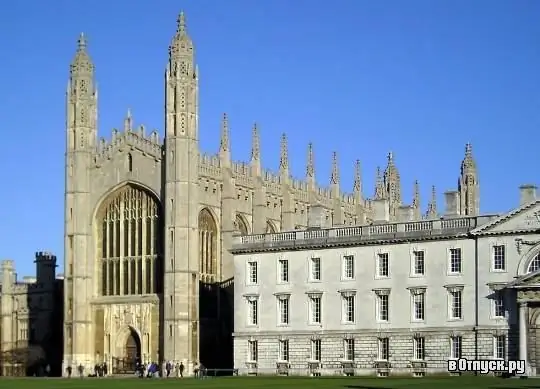
Description of the attraction
King's College of the Virgin Mary and St. Nicholas in Cambridge (or simply King's College) is one of the colleges that make up the University of Cambridge. The college was founded in 1441 by King Henry VI, shortly after the founding of his sister college at Eton.
The construction of the college chapel, begun in 1446, was not completed until 1544 under King Henry VIII. The King's College Chapel is considered a gem of late Gothic architecture. The world's largest fan-shaped ceiling, stained glass windows and a wooden altar fence make the chapel a unique masterpiece of Gothic architecture, and the chapel itself has become a symbol of Cambridge - like Big Ben in London or the Eiffel Tower in Paris. The chapel is decorated with a painting by Rubens "The Adoration of the Magi". The chapel choir is known far beyond Cambridge, and Christmas carols are broadcast every year on Christmas Eve on the BBC.
The college itself, which was conceived as a very modest building, later turned into a luxurious symbol of royal patronage. The college received significant feudal privileges, coupled with generous donations from the royal treasury. For many years, only Eton graduates studied at King's College. Now the connection with Eaton has weakened, but there is still a special scholarship only for graduates of Eton. King's College now enrolls more public school graduates than other Cambridge colleges, and if the student comes from a working-class family, it is much easier for him to settle in King's College. Perhaps this is what caused the high political activity of the students of King's College, their participation in protests and strikes. Political associations of King's College traditionally adhere to leftist views - up to receiving the epithet "red royal" college.






